In 1754 the founder of the Brotherhood of Nossa Senhora da Lapa preached around Porto, trying to build a chapel to honour Nossa Senhora da Lapa. In 1755 the money collected was used to build the Chapel of Nossa Senhora da Lapa das Confissões. Later on, Brotherhood ok Lapa decided to build a new church. The construction took over 100 years. From 1835 the Church hosts D. Pedro IV’s heart kept in a monument set in the main chapel. In 1995 the Church purchased the pipe organ, a fundamental piece for the church concerts, classified as Public Interest Estate since 2013.
Day 1
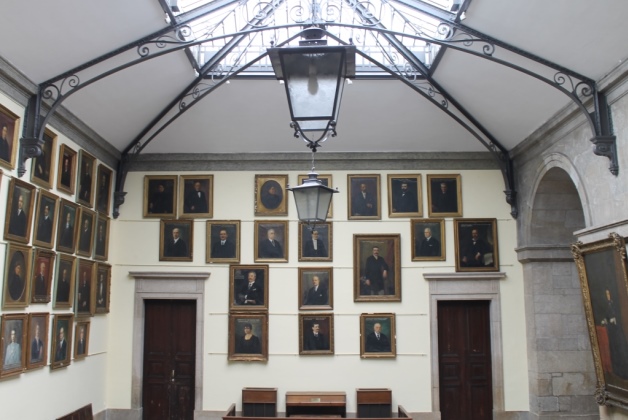
Lapa Church
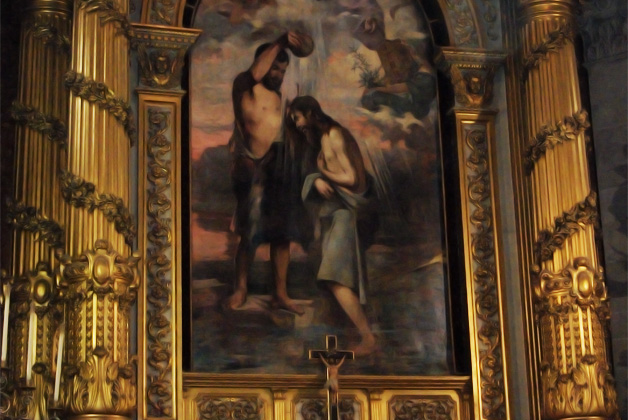
Church of Trindade
Built throughout the entire 19th century following the project of the architect Carlos Amarante Cruz. A large panel by the painter José de Brito, representing the Baptism of Christ, stands out in the main alter.
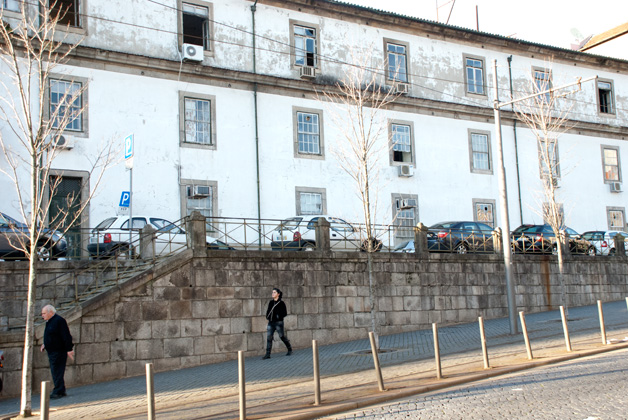
Old Civil Government Building
Built in the 18th century (1790) to be used as Casa Pia (Pious House), outwardly, the central body of the façade where a sober fronton appears is worthy of mention .
The building was used for several purposes from a military criminals and recruits prison to General Headquarters and Civilian Government main office.
Cost
0 €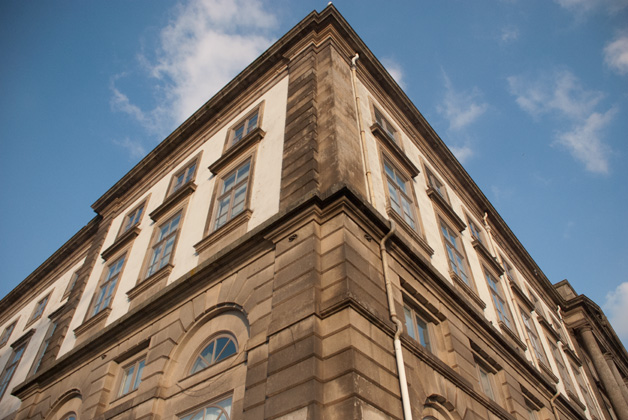
Rectory of the University of Porto
Designed by Carlos Amarante in the neoclassical style and financed
by the Literary Subsidy, a tax
on wine, 1803.
The building, of classical style, has some similarities with the Santo António Hospital.
In 1911 it housed the Faculty of Sciences, and presently houses the Rectory and the Natural History Museum of the University of Porto.
Included in the Urban Wine Route.
Cost
0 €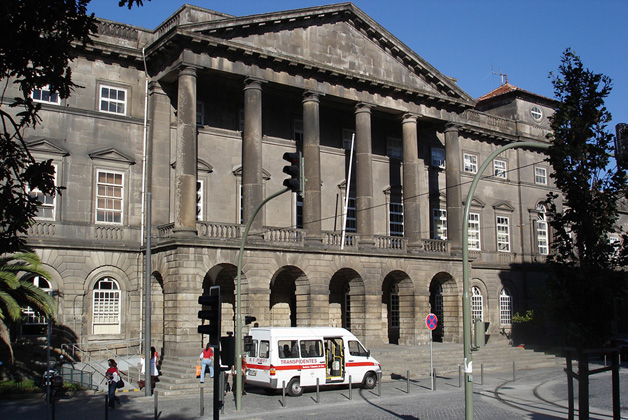
Santo António Hospital (Centro Hospitalar do Porto)
The hospital was built between 1770 and 1825 by the Public Works Board, in neo-Palladian English style, or “Port Wine Architecture”, following a plan by the English architect John Carr.
Forming a large quadrangle around a yard, its simplicity and the clarity of its content confer the building an austere and sober aspect.
Included in the Urban Wine Route.
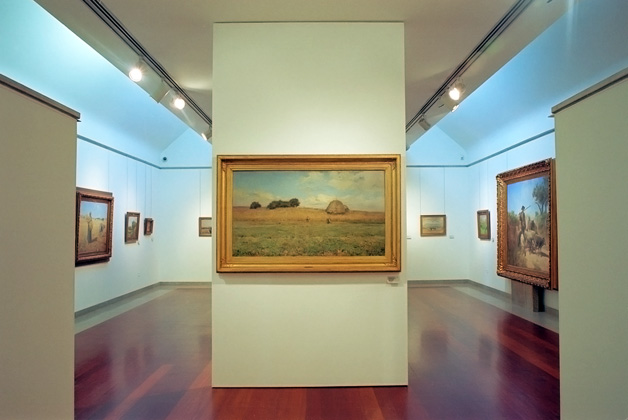
Soares dos Reis National Museum
Founded in 1833, the Soares dos Reis National Museum is the first public art museum in Portugal.
Housed in the elegant Carrancas Palace — an 18th-century neoclassical building located in the heart of Porto — it offers a visit that combines history, art, and heritage.
Its collection brings together more than 18,000 pieces, including paintings, sculptures, ceramics, jewelry, furniture, and glass, covering various periods and styles of Portuguese art.
One of the museum’s key works is O Desterrado (The Exiled), by António Soares dos Reis, a symbol of longing and of the artistic excellence of 19th-century Portugal.
Portugal — and particularly the city of Porto — find in this museum an essential space for the promotion of the arts and the preservation of national cultural identity, making it a must-visit for anyone wishing to explore the city’s artistic and historical soul.
Cost
3 €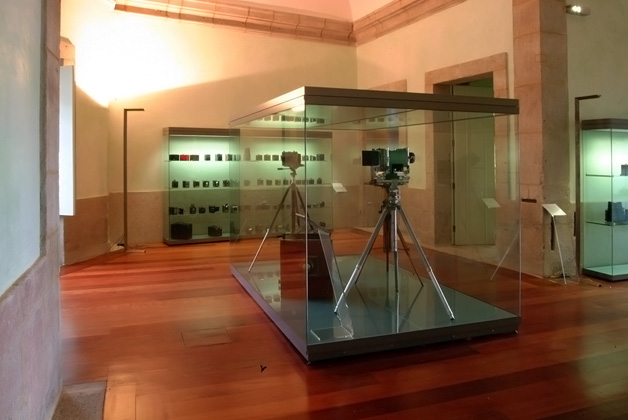
Building of the former Gaol and Court of Appeal
Granite building, dating from 1582, rebuilt in 1767 in neo-classical style, according to the design of the architect Eugénio dos Santos, by initiative of João de Almada e Melo and financed by Companhia Geral da Agrigultura das Vinhas do Alto Douro. It presents a geometric sequence of windows (103 on the whole). This polygonal-shaped building has 4 façades, two of which are related to its main functions: the main façade, on Rua de São Bento da Vitória, allows you to enter the Court sector. The other façade, opened to the Cordoaria Garden, was formerly constructed for the direct passage of prisoners and is currently the building’s main entrance.
Camilo Castelo Branco, who was one of Portugal's most famous writers and was charged with adultery as well as the famous Zé do Telhado who was charged with theft were kept here.
Between 1999 and 2002 the building was restored under the direction of Eduardo Souto de Moura and Humberto Vieira, to become the current Portuguese Centre for Photography, including an exhibition centre.
Guided visits to the building are available.
Included in the Urban Wine Route.
Cost
0 €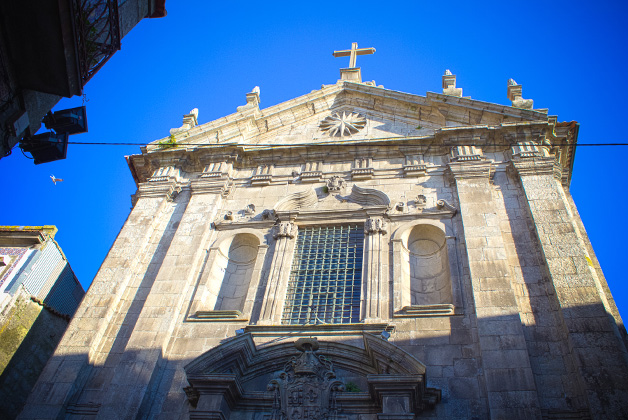
Church of Nossa Senhora da Vitória
The church began to be built in 1755, following the initiative of bishop D. Frei António de Sousa, and was finished in 1769. It was badly damaged during the Porto Siege and also by a fire in 1874 that destructed its main altar. Special mention goes to the wood carving of the altars, the pulpits and the valance of the main arch, designed and produced by the most remarkable artists of rococo in Porto - Francisco Pereira Campanhã and José Teixeira Guimarães. The sculpture of the Virgin on the main altar was made by the sculptor Soares dos Reis, except for its face that was ordered to a local saint-maker.
Cost
0 €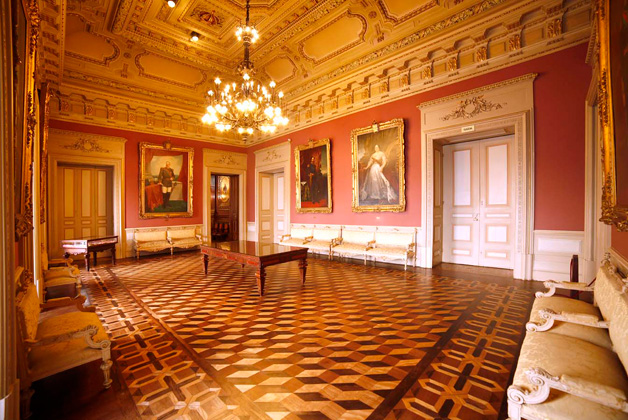
Palácio da Bolsa
The Jewel in the City, a unique building.
In the historic centre of Porto, World Heritage Site, Palácio da Bolsa or Stock Exchange Palace, is the city and region’s crowning jewel. The building is designated a national monument and is the headquarters of Associação Comercial do Porto. It was built in the second half of the 19th century.
Of neoclassical style, some of the biggest names in Portuguese architecture were involved in the different stages of its construction, including Marques da Silva and Tomas Soller. Painting and sculpture involved figures such as Veloso Salgado, Henrique Medina, Teixeira Lopes and Soares dos Reis.
Many famous personalities of the 19th, 20th and 21st centuries have graced Palácio da Bolsa. Monarchs, Presidents of the Republic, and numerous world leaders have all walked its hallways. The elegance and diversity of the interior also ensure that Palácio da Bolsa is one of the northern region’s most visited monument, with over 300,000 visitors every year.
Palácio da Bolsa is one of the most privileged venues for holding political, economic, cultural and social events - from ceremonies to conferences and exhibitions to concerts, congresses and parties. Providing excellent conditions, the Palace stages most of northern Portugal's official receptions and its many rooms mean that it is highly versatile and able to hold a wide range of events.
Accessible for people with reduced mobility through a side entrance.
Closed: March 28th to April 4th / December 25th / January 1st
December 24th and 31st closed at 1pm
Cost
10 €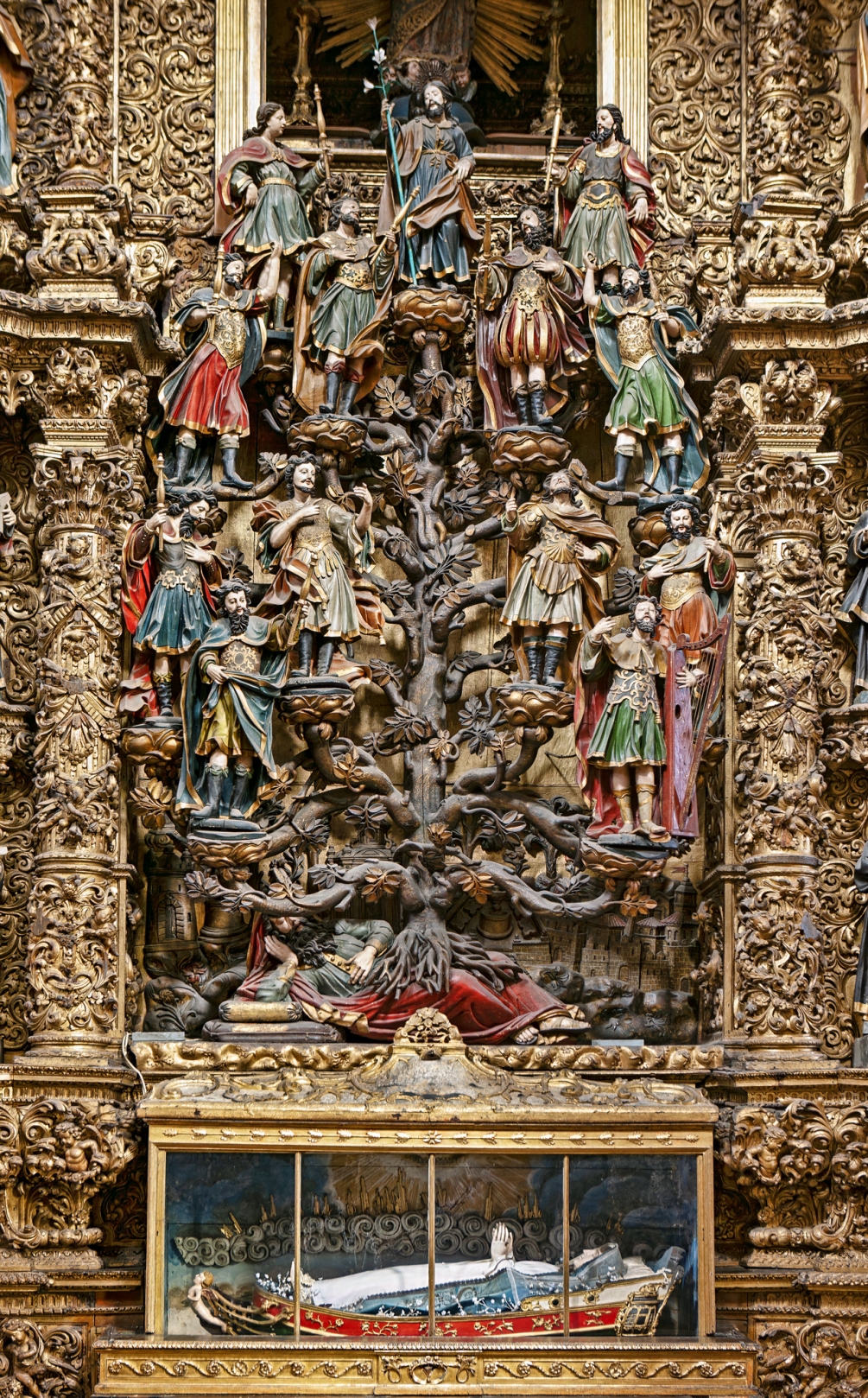
Igreja de S. Francisco do Porto
The city’s most important Gothic temple, whose construction began in the fourteenth century.
It is one of the most important works of the Baroque, by its gilded interior from the seventeenth and eighteenth centuries. It was the exuberance of its gild carved wood work that led Count Raczinsky to describe it as the “Church of Gold”. And, overwhelmed, he adds: “The gild of this church is so beautiful and rich that goes far beyond everything I have seen in Portugal and in the whole world”. It is worth of notice the Tree of Jesse, as well as the catacombs.
It is a National Monument since 1910 and World Cultural Heritage by UNESCO since 1996.
January, February, November and December: 9am-6pm
March, April, May, June and October: 9am-8pm
July, August and September: 9am-8pm
Cost
8 €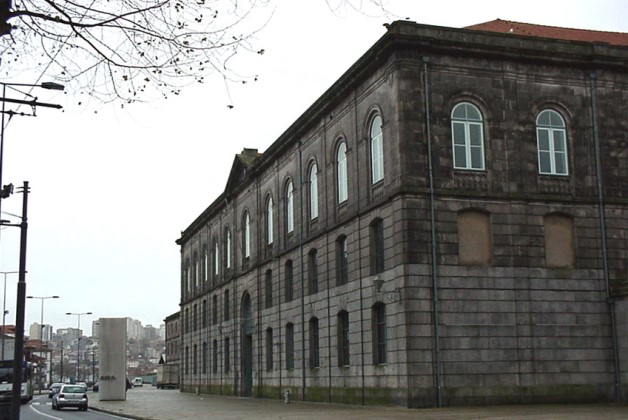
Alfândega Porto Congress Centre
A neoclassical building, built in the 19th century, according to a project carried out by the engineer Jean F. G. Colson. It has two facades, one facing the Douro river and one facing the city. Note the structural solutions that resorted to the use of iron in conjunction with other materials - stone, brick or wood - depending on the functionality of the different spaces. In 1987, it was decided to house the future Museum of Transport and Communications, in the building belonging to the Association with the same name. For this, restoration and adaptation works were carried out, according to the project by the architect Eduardo Souto Moura. The Association for the Transport and Communications Museum (Associação para o Museu dos Transportes e Comunicações-A.M.T.C) also manages a Congress Centre, spread across various areas in the Building of Alfândega Nova do Porto.
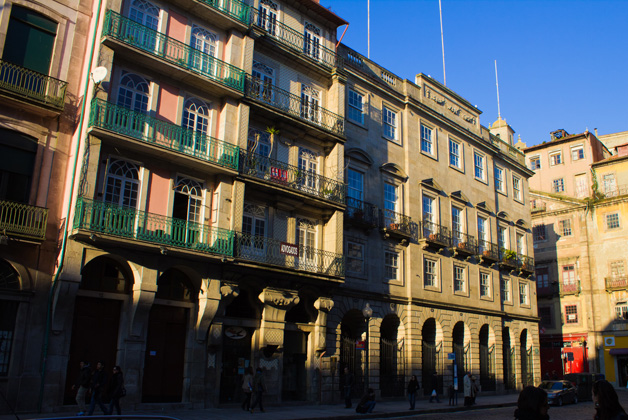
English Factory
Designed by John Whitehead in neo-Palladian style and built between 1785 and 1790, it was meant to be used as a meeting place for the English businessmen living in Porto. On the main façade, the ground floor is made up of seven arches that give access to the colonnaded gallery.
In contrast with this, the main floor is formed of high openings with verandas and pediments. A balustrade attic tops the building.
Included in the Urban Wine Route.
Cost
0 €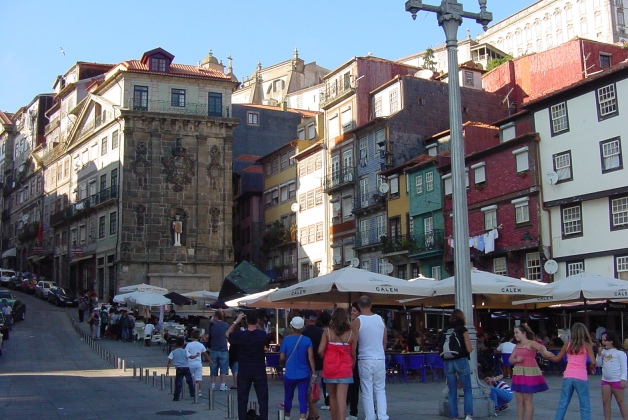
Praça da Ribeira
Cited already in 1389 as being of medieval origin, this square is thought to be one of the oldest in the city. A busy commercial centre, with tents serving as shops and a fish market, it came to the attention of João de Almada e Melo who set out to completely remodel the square in the 18th Century. The works carried out at this time by the Public Works Board, under the influence of John Whitehead, were financed by revenue from wine. Of his original plans, only the sides to the north, with its monumental Praça da Ribeira fountain, and the west were ever completed. The wall to the south was knocked down in 1821 and the medieval buildings along the east side survive to this day. Archaeological work in the 1980s led to the discovery of a 17th Century fountain. Reconstructed in its original location, it was crowned with a sculpture by José Rodrigues known popularly as the “Cube of the Ribeira”.
On the 24th of June 2000, a statute of St. John the Baptist by João Cutileiro was unveiled in a niche in the Praça da Ribeira fountain.
A must see, with lots of exciting nightlife on offer as well.
Included in the Urban Wine Route.
Map View
Plan Your Trip
Arriving

Covered by an ever progressing, accomplished transport network, getting to Porto could never be easier whether it be by plane, bus, car, boat, train or metro.
Getting around

Travelling within the city is made simple should you go by public transport, your own car or a hired one.
Practical information

Here you will find some basic data on Porto as well as information on various public and private services available.
History

This is one of Europe's oldest tourist destinations. Its wealth of artistic heritage, Port Wine, open-air leisure spaces and cultural life are just some of the reasons to visit this city.
Everything you need to know


